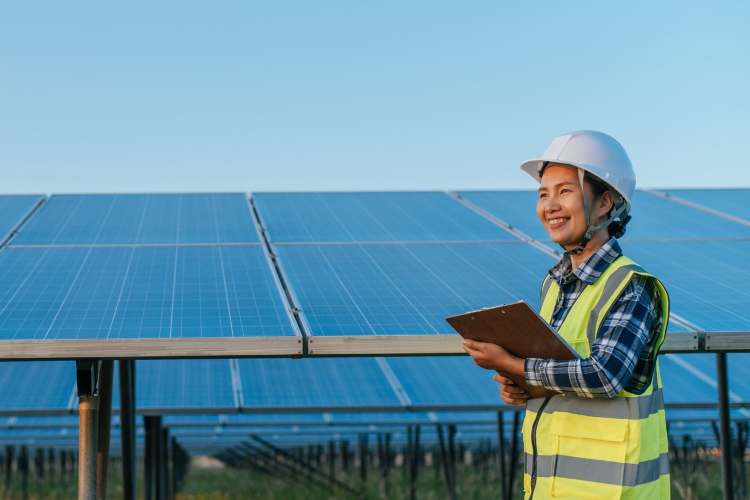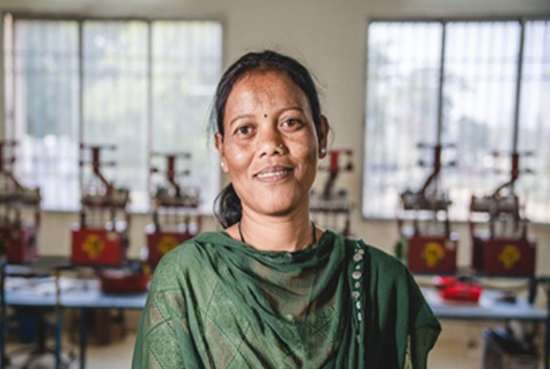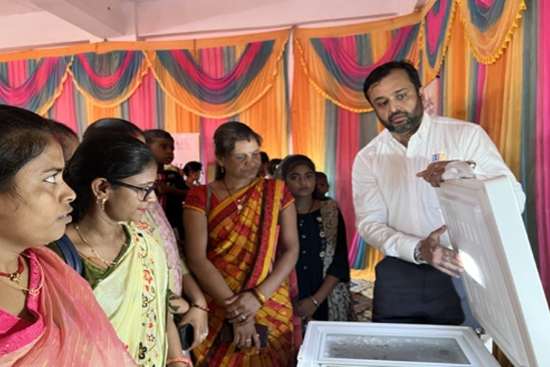
India’s path to a net zero future cannot bypass half its population. With women accounting for just 11% of the clean energy workforce, the sector remains starkly imbalanced — globally, the figure is higher but still inadequate at 32%. Achieving both climate and development goals will require a more inclusive approach that places women at the centre of the transition.
Decentralised Renewable Energy (DRE) technologies offer a practical entry point. Unlike large-scale grid projects, DRE solutions — typically solar, biomass or wind-based systems installed near or within homes — can directly empower women by improving access to electricity, increasing productivity, and creating enterprise opportunities. India’s clean energy roadmap, which targets 500 GW of non-fossil fuel capacity by 2030, focuses largely on utility-scale renewables. But the DRE segment, though less glamorous, may prove more effective in addressing the twin challenges of energy poverty and gender disparity at the grassroots.
READ I Gaza famine: A moral failure of global leadership
DRE: A catalyst for women’s livelihoods
Initially deployed to provide basic lighting and power in remote areas, DRE technologies are evolving into engines of local economic activity. Their decentralised nature makes them particularly well-suited to last-mile populations and women-led micro-enterprises. By some estimates, DRE could generate up to 37 million new livelihoods and open up a $50 billion market in India.
Real-world examples reveal this potential. Bhavana Malandkar, a fisherwoman in Maharashtra, used to spend hours and Rs 6,000–7,000 a month travelling to buy ice to preserve her catch. After investing in a solar-powered refrigerator, she saved both time and money, allowing her to expand her business. “Now, I use those extra hours to dry fish and grow my income,” she says.

In Odisha’s Keonjhar district, tribal women traditionally used the laborious thigh-reeling method to produce silk yarn. With solar-powered reeling machines—lightweight and easy to use—their output increased and incomes rose to Rs 6,000–7,000 per month. These case studies show that DRE technologies are more than just energy solutions; they are enablers of economic mobility, especially for women.
A survey by the Council on Energy, Environment and Water (CEEW) found that 90% of women using DRE solutions reported income growth, with average earnings rising by a third over an eight-month period. Equally important, over 80% reported increased confidence, and 91% cited improvements in knowledge and skills—clear indicators of broader social empowerment.
Building the ecosystem
Despite their promise, DRE technologies remain underutilised among rural women. The reasons are predictable: low awareness, high upfront costs, and limited access to financing or technical support. Addressing these bottlenecks requires a supportive ecosystem that enables adoption and scale.
The Powering Livelihoods (PL) programme — jointly run by CEEW and Villgro Innovations Foundation — provides such a platform. It promotes DRE-powered technologies that reduce drudgery and expand home-based livelihoods for women. Crucially, it integrates women across the value chain—from awareness to adoption to enterprise.

One effective strategy involves hyperlocal events, where women can see and test technologies first-hand. In Rajasthan, rural women explored the use of solar refrigerators at such a demonstration. The programme also facilitates “experience centres” with female demo champions, who serve as peer educators and product ambassadors.
To ease financing constraints, PL has partnered with non-traditional lenders such as Rang De, Samunnati, and Ashv Finance. Through Rang De, Jyoti, a dairy farmer from Tamil Nadu, secured a low-interest loan to invest in a solar-powered hydroponic fodder unit. The result: healthier cattle, better milk yields, and lower dependence on conventional fodder.
As of 2024, the programme has enabled over 32,000 clean energy-powered livelihoods—half of them led by women. The approach is replicable and scalable, particularly across the Global South where the dual challenges of energy access and gender inequality are acute.
Policy levers to scale gender inclusion
Expanding this model requires institutional support and multisector collaboration. First, policymakers must integrate DRE technologies into flagship livelihood schemes such as the Deendayal Antyodaya Yojana – National Rural Livelihoods Mission (DAY-NRLM) and the Lakhpati Didi initiative. Existing mechanisms like Revolving Funds, Community Investment Funds, and low-interest loans can be repurposed to support clean-tech adoption.
The Pradhan Mantri Formalisation of Micro Food Processing Enterprises scheme is another vehicle. It already provides credit-linked subsidies and training for entrepreneurs—these can be aligned with DRE-powered post-harvest solutions such as solar dryers and energy-efficient food processors.
Second, the financial sector must become more gender-responsive. Banks and NBFCs can simplify documentation, design tailored loan products, and incentivise women borrowers. The Reserve Bank of India’s push for greater financial inclusion offers a timely opportunity.
Third, manufacturers and clean energy firms must commit to gender milestones in their business models. This means not just hiring women, but also integrating them as distributors, service providers, and co-creators of technology. Outreach should be adapted to reach women in remote areas—through hyperlocal fairs, mobile demo units, and peer networks.
Finally, civil society and philanthropic institutions have a role to play. Women’s collectives such as Self-Help Groups can be critical in spreading awareness, building skills, and seeding micro-enterprises. Philanthropic capital should be channelled toward de-risking women-led ventures and providing early-stage support.
India’s energy transition is often discussed in terms of technology and investment. But unless it is also inclusive, it risks replicating old inequities in new forms. The decentralised renewable energy segment offers a rare confluence of climate mitigation, rural development, and gender justice.
By placing women at the centre of clean energy adoption—through policy, finance, entrepreneurship, and community engagement—India can set a global example. As the country moves toward its 2070 net zero target, the clean energy transition must also become a social transition—one that is just, inclusive, and led by women.
Dr Chetana Naskar is currently working as the India Lead Coordinator for SHE Changes Climate and as an independent consultant with VV Giri National Labour Institute. Mousumi Kabiraj is a Programme Associate at the Council on Energy, Environment and Water (CEEW), an independent, not-for-profit research organisation.
